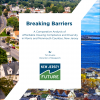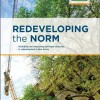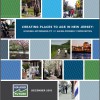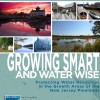Demographics & Trends
A key aspect of planning effectively for the future, in terms of where and how to spend money on infrastructure and state government services, is being aware of demographic and macroeconomic trends that may affect the amount of growth New Jersey is likely to experience, our capacity to accommodate it and what physical form the growth is likely to take.
Many of these trends transcend New Jersey’s borders and are beyond the ability of lower levels of government to address. Ideally, state-level planning should focus on these issues and develop or modify policies to adapt to them. Trends in household composition (and the resulting demand for different housing-unit types), retail, and the locational preferences of different types of employers and workers will all affect what kinds of buildings need to be built, and where.

New Jersey is an expensive state, with among the highest housing costs in the country. It is also one of the most segregated states in the nation by both income and race, despite being one of the most racially diverse states overall. A new report from New Jersey Future explores the relationship between the enforcement of housing requirements, housing affordability, and racial and economic diversity, using a comparison between two demographically similar suburban counties—Morris and Monmouth—that followed different trajectories in complying with New Jersey’s affordable housing obligations.

2023 was a year full of many unpredictable environmental events ranging from major rainfall to extreme heat to a collapsed highway overpass. Our daily newsletter “What We’re Reading” brings our readers the most up-to-date articles covering our New Jersey Future issue areas and major developments in the Garden State.

As the world slowly but surely emerges from the challenges of the COVID-19 pandemic, all of us are evaluating the new parameters of our state and national economies that have experienced stimulus spending, historic inflation, supply chain disruptions, and high interest rates all in quick succession.

While New Jersey is one of the most diverse states in the nation at the macro level, at the local level it is also one of the most segregated. The state has grown more demographically diverse over the last two decades, but most of its individual towns and neighborhoods are either predominantly white or predominantly non-white, with few places occupying the “diverse” range in between.

Both before and after Superstorm Sandy, the trend at the Jersey Shore has been toward higher home values, a smaller percentage of housing units being occupied year-round, and an increasing presence of retirees among year-round residents. Is the Shore becoming a playground for the rich? And specifically rich retirees?

This report identifies strategies to lower both cost and risk in redevelopment projects, as redevelopment increasingly becomes the norm for accommodating growth in New Jersey. January 2016.

In this report, New Jersey Future analyzed housing affordability in each New Jersey municipality, to see where households headed by someone 65 or older have high housing costs. The places where housing cost burden is greatest fall into two groups: towns that are expensive for everyone, and towns that are dominated by larger, single-family housing stock. December 2015.

Development in the Pinelands growth areas has affected water resources and will continue to exert pressures going forward. This report highlights what can be done by municipal, regional and state agencies to minimize their negative impacts. July 2014.

This report and related case studies summarize the state of urban water infrastructure in New Jersey and how it affects residents and businesses. May 2014.
March 19, 2014 — A research report recently released by New Jersey Future, Creating Places to Age in New Jersey, evaluates municipalities’ land-use patterns based on how well designed they are to accommodate the changing mobility needs of an aging population.
See all New Jersey Future Blog posts and articles in this category »
Reports, Presentations and Testimony
- APA Conference Places To Age Best Practices
- New Jersey Future Demographic Trends by Age September 2017
- New Jersey Future 2017 Gubernatorial Platform
- League of Municipalities Article on Aging in Community April 2016
- New Jersey Future Redeveloping the Norm 01-16 (Intern Report)
- New Jersey Future Housing Affordability and Aging-Friendly Communities
- Housing Affordability and Aging-Friendly Communities Housing Cost-Burden Municipal Data by Municipality
- Housing Affordability and Aging-Friendly Communities Housing Cost-Burden Municipal Data by Cost Burden Rank
- PINELANDS_WEB_8_4_14-1
- New Jersey Future Van Abs 2014 Pinelands Growth Area Water Assessment
- Creating Places To Age in New Jersey Municipal Best Practices
- Creating Places To Age in New Jersey municipal data
- Creating Places To Age Bergen-Passaic Supplement
- Social Innovation and Smart Growth 9-13 (Intern Report)
- Land Use Trends NJPHA 2011
- DFatton Land Use Trends APA-NJ 11-4-2011
- CSturm State of Solar APA-NJ 11-4-2011
- Transit-Oriented Development Workshop for HCDNNJ memb mtg 06-15-2011
- Achieving Genuine Prosperity 04-01
- Race to the Middle: The Homogenization of New Jersey's Population Density
- Moving Out: New Jersey's Population Growth and Migration Patterns
- Getting to Work 11-08
- Built Out Permit Activity 12-10
- Built Out 12-10











